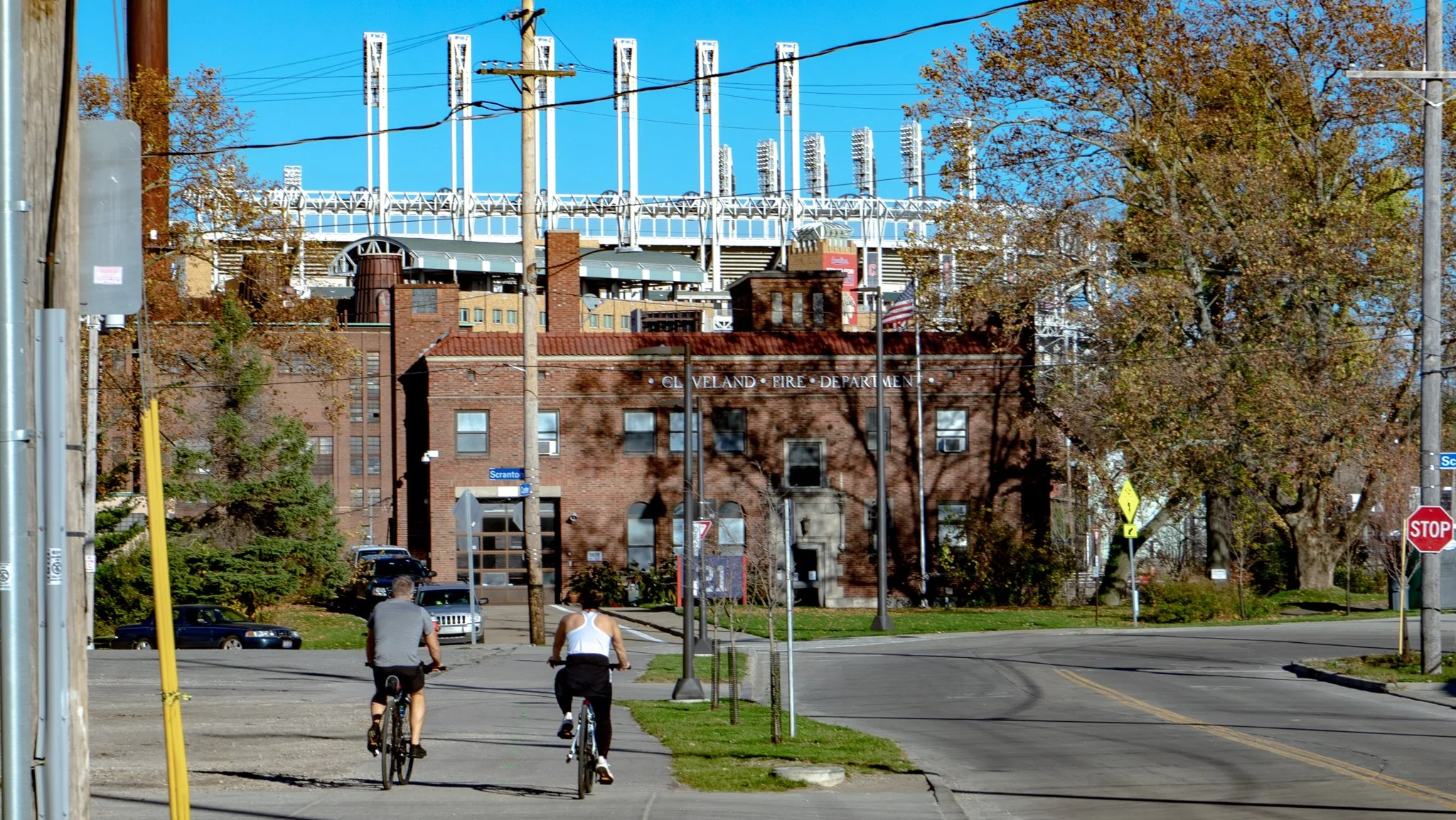Background
The Cleveland Midway concept was developed by Bike Cleveland and community partners in 2011 to reclaim excess right-of-way on Cleveland’s over-built roadway network. Working with planners, engineers, and community members, Bike Cleveland identified an 80-mile network of protected bike lanes that would be a safe option for people of all ages and abilities to travel by bike across our city. After sharing the concept with City leaders, the citywide Midway separated bicycle network was studied by the Cleveland City Planning Commission in 2016 as part of the Northeast Ohio Areawide Coordinating Agency’s (NOACA) Transportation for Livable Communities Initiative (TLCI) Program. In 2017, Superior Avenue between East Roadway and East 55th Street was selected as the first segment for implementation (approximately 2.4 miles long). NOACA has awarded the City of Cleveland a total of $19.6 million ($8,329,000 in 2018 and $11.3 million in 2022) of federal funds for the construction of the Cleveland Midway. Traffic analysis for Superior Avenue was completed in March 2020 to assess access requirements and safety along the corridor. The design process for implementation began at the beginning of 2023.
More Information
Environment
Federal data shows that 30.9% of greenhouse gas produced in the state is from the transportation sector, according to the Northeast Ohio Areawide Coordinating Agency’s 2022 Air Quality Trends Report. In 2021, Cuyahoga County had the highest greenhouse gas emission across NOACA’s five-county region at more than 57%.
Increased Ridership
Separated bike lanes make cycling more comfortable and convenient for people of all ages and abilities, including children, families, and older adults. This leads to increased ridership, which has several benefits, including:
Reduced traffic congestion: Traffic congestion is reduced as more people choose to bike instead of drive. This can save commuters time and money and improve air quality.
Improved public health: Cycling is a great way to get exercise, which can reduce the risk of chronic diseases such as heart disease, stroke, and diabetes.
Reduced environmental impact: Cycling is a zero-emission mode of transportation, which helps to reduce air pollution and climate change.
Safety
The Cleveland Midway will be physically separated from motor vehicle traffic by a physical barrier, such as curbs and greenspace. This reduces the risk of collisions between cyclists and cars, trucks, and buses. Studies have shown that separated bike lanes can reduce bike-related injuries by up to 75%.
Economic Benefits
Separated bike lanes boost local economies by attracting businesses and residents to bikeable neighborhoods. Studies have shown that businesses near separated bike lanes have higher sales than those without protected bike lanes. A 2015 study by the Indiana University Public Policy Institute found that there has been over $ 1 billion of economic investment along the Indianapolis Cultural Trail since it opened in 2013.
In addition, a 2012 study by Portland State University found that protected bike lanes in Portland, Oregon, generate over $100 million in economic activity each year. The study also found that protected bike lanes created over 1,000 jobs.
Additional Benefits
In addition to the above benefits, separated bike lane networks can also:
Improve community connectivity: Separated bike lanes can connect different parts of a city, making it easier for people who, by choice or necessity, get around without a car.
Promote tourism: Separated bike lanes can make a city more attractive to tourists and visitors. A 2015 Indiana University Public Policy Institute study estimated that the Indianapolis Cultural Trail has generated over $100 million in tourism revenue.
Enhance the public realm: Separated bike lanes can create more vibrant and livable streets that are safer for all road users, whether they are biking, walking, accessing public transit, or driving.
Equity
Separated bike lanes can help to make transportation more equitable by providing a safe and affordable way for people of all income levels to get around. This is crucial in Cleveland, where almost 30% of residents do not have access to a private automobile but rely on walking, biking, and/or public transportation.


